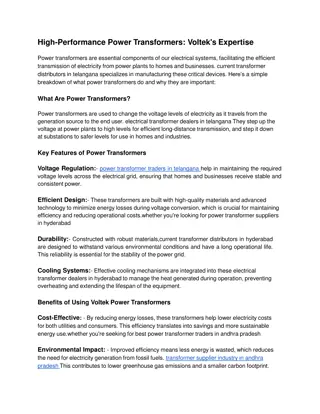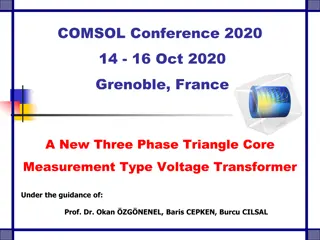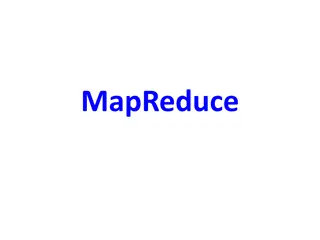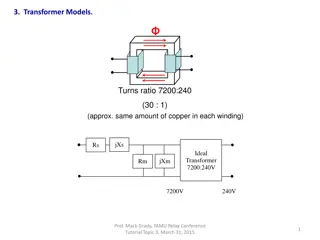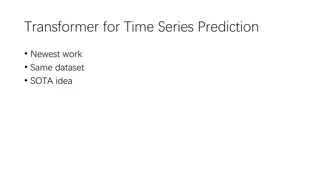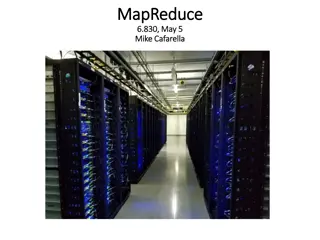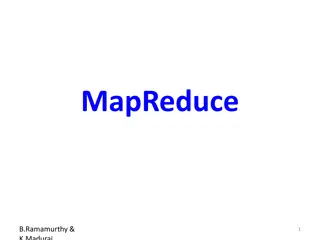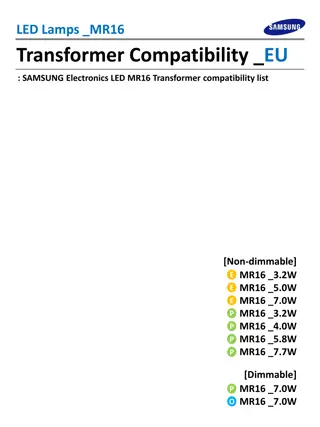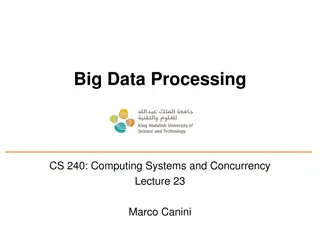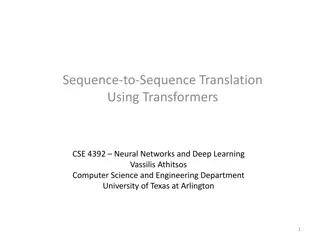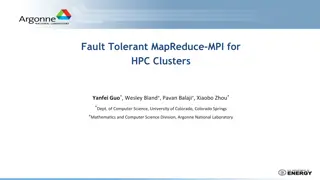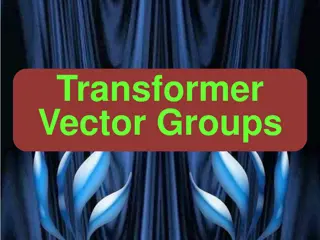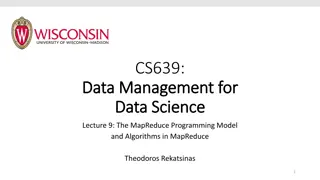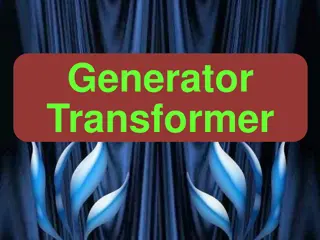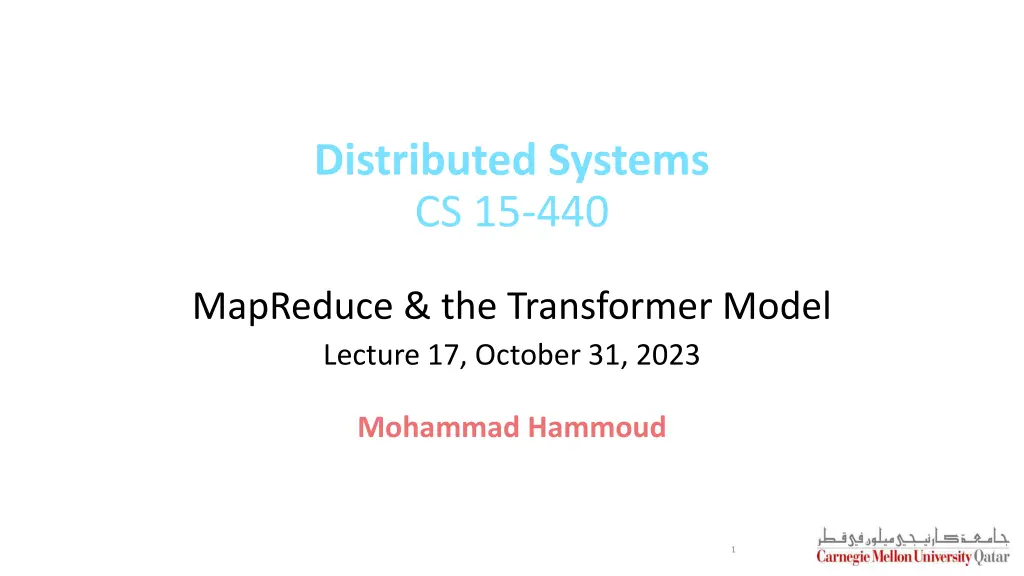
Understanding Distributed Systems and Big Data Storage Techniques
Explore the world of distributed systems, MapReduce, and the Transformer Model, while delving into the challenges of handling big data storage efficiently. Learn about partitioning, striping, and techniques employed by storage systems like the Google File System to manage large-scale data processing effectively.
Download Presentation

Please find below an Image/Link to download the presentation.
The content on the website is provided AS IS for your information and personal use only. It may not be sold, licensed, or shared on other websites without obtaining consent from the author. If you encounter any issues during the download, it is possible that the publisher has removed the file from their server.
You are allowed to download the files provided on this website for personal or commercial use, subject to the condition that they are used lawfully. All files are the property of their respective owners.
The content on the website is provided AS IS for your information and personal use only. It may not be sold, licensed, or shared on other websites without obtaining consent from the author.
E N D
Presentation Transcript
Distributed Systems CS 15-440 MapReduce & the Transformer Model Lecture 17, October 31, 2023 Mohammad Hammoud 1
Today Last Session: MPI Part II Today s Session: MapReduce & the Transformer Model Announcements: P3 is due on Nov 16 PS4 is released and due on Nov 12 Quiz II is on Nov 5
Course Map Applications Programming Models Fast & Reliable or Efficient DS Replication & Consistency Fault-tolerance Communication Paradigms Architectures Naming Synchronization Correct or Effective DS Networks
Course Map Applications Programming Models Replication & Consistency Fault-tolerance Communication Paradigms Architectures Naming Synchronization Networks
Overview Modern Programming Models & Applications The Transformer Model MapReduce Ray
We Live in a World of Big Data A few examples (all per day): 333.22 billion emails sent 129.89 billion crypto purchased 8.5 billion Google searches 1.44 billion hours streamed 637.92 million USD spent on Amazon 150.62 million hours spent in Zoom meetings 110.02 million USD spent on DoorDash Etc., 6
How to Store Big Data? We can employ a storage system that is either a distributed file system or a distributed database system The storage system partitions and distributes data, using certain striping (or partitioning) and placement techniques This allows for concurrent accesses to data & improves fault-tolerance Striping Unit Stripe Size Logical File 0 1 2 3 4 5 6 7 8 9 10 11 12 13 14 15 0 4 8 12 1 5 9 13 2 6 10 14 3 7 11 15 Server 1 Server 2 Server 3 Server 4
Example: The Google File System GFS partitions large files into fixed-size blocks and distributes them randomly across cluster machines Blk Blk Blk 0 Blk 1 Blk 4 Blk 6 Blk 5 Large File 2 3 Server 2 Server 3 Server 1 Server 0 (Writer) Blk 0 Blk 0 Blk 1 Blk 0 0M Blk 1 Blk 2 Blk 2 Blk 1 64M Blk 2 Blk 3 Blk 4 Blk 4 Blk 5 Blk 6 128M Blk 3 Blk 3 Blk 5 192M Blk 4 Blk 6 256M Blk 5 320M Blk 6 384M
Example: The Google File System GFS adopts a master-slave architecture File name GFS client Master Contact address Chunk Id, range Chunk Server Chunk Server Chunk Server Chunk data Linux File System Linux File System Linux File System
How to Process Big Data? We can create a custom distributed system (or program) for each new algorithm Cumbersome! Or utilize modern distributed frameworks, which: Relieve programmers from worrying about the many difficult aspects of distributed systems Allow programmers to focus on ONLY the sequential parts of their programs E.g., MapReduce (or Hadoop) & Ray
Hadoop: HDFS + MapReduce Hadoop is one of the most successful realizations of large-scale data-parallel distributed frameworks Hadoop MapReduce is an open-source implementation of Google s MapReduce Hadoop uses Hadoop Distributed File System (HDFS), which is is an open-source implementation of GFS, as a storage layer
Hadoop MapReduce: A Birds Eye View Hadoop MapReduce incorporates two phases, Map and Reduce phases, which encompass multiple Map and Reduce tasks Map Task Partition Partition HDFS BLK Split 0 Partition Reduce Task Partition Partition Partition Map Task HDFS BLK Split 1 Partition Partition Datase t Reduce Task To HDFS Partition Partition Map Task HDFS BLK Split 2 Partition HDFS Partition Partition Partition Reduce Task Partition Map Task HDFS BLK Split 3 Partition Partition Merge & Sort Stage Reduce Phase Shuffle Stage Reduce Stage Map Phase
Architecture and Scheduler Hadoop MapReduce adopts a master-slave architecture Core Switch The master A slave Rack Switch 1 Rack Switch 2 TaskTracker5 MT2 TaskTracker2 JobTracker MT1MT2MT3 TaskTracker3 TaskTracker4 TaskTracker1 MT3 Request a Map Task Schedule a Map Task at an Empty Map Slot on TaskTracker1 A pull-based task scheduling mechanism is used, whereby: Map tasks are scheduled in proximity of HDFS blocks Reduce tasks are scheduled anywhere
Architecture and Scheduler Hadoop MapReduce adopts a master-slave architecture Core Switch The master A slave Rack Switch 1 Rack Switch 2 TaskTracker5 MT2 TaskTracker2 JobTracker MT2MT3 TaskTracker3 TaskTracker4 TaskTracker1 MT1 MT3 Request a Map Task Schedule a Map Task at an Empty Map Slot on TaskTracker1 With the above setup, how many Map tasks can run in parallel? Each Task Tracker (TT) has 2 Map slots, thus can run 2 Map tasks concurrently With 5 TTs and 2 Map slots on each TT, 10 Map tasks can run in parallel The maximum number of Map tasks that can run in parallel is denoted as Map wave
Architecture and Scheduler Hadoop MapReduce adopts a master-slave architecture Core Switch The master A slave Rack Switch 1 Rack Switch 2 TaskTracker5 MT2 TaskTracker2 JobTracker MT2MT3 TaskTracker3 TaskTracker4 TaskTracker1 MT1 MT3 Request a Map Task Schedule a Map Task at an Empty Map Slot on TaskTracker1 For a 1024MB dataset, how many Map waves are needed? The size of each HDFS block is by default 64MB and each split encompasses by default 1 HDFS block Hence, there will be a total of 1024/64 = 16 HDFS blocks or 16 splits The input to each Map task is a single split, thus there will be a total of 16 Map tasks Consequently, we would need 16 tasks/10 slots = 2 Map waves (the 2nd wave will have only 6 tasks!)
Overview Modern Programming Models & Applications The Transformer Model MapReduce Ray
Overview Modern Programming Models & Applications The Transformer Model MapReduce Ray The Core Architecture The Attention Process Representations
Syntactical Representation W1 W2 W3 . . . Wn W1 1 0 0 . . . 0 W2 0 1 0 . . . 0 W3 0 0 1 . . . 0 A vocabulary of n words ... ... ... ... ... Wn 0 0 0 . . . 1 A one-hot representation using an n (say, 50,000) dimensional vector
Syntactical Representation W1 Orange Apple . . . Wn W1 1 0 0 . . . 0 W2 0 1 0 . . . 0 W3 0 0 1 . . . 0 A vocabulary of n words ... ... ... ... ... Wn 0 0 0 . . . 1 Not similar (when you pursue their dot product) although they re both fruits!
Semantical Representation King Orange Apple . . . Queen Royal o.93 0.0 0.0 . . . 0.95 Size 0.78 0.08 0.076 . . . 0.77 Fruit 0.0 0.99 0.94 . . . 0.0 Features ... ... ... ... ... Age 0.51 0.1 0.09 . . . 0.6 A feature representation (also known as word embedding)using an m (say, 300) dimensional vector
Semantical Representation King Orange Apple . . . Queen Royal o.93 0.0 0.0 . . . 0.95 Size 0.78 0.08 0.076 . . . 0.77 Fruit 0.0 0.99 0.94 . . . 0.0 Features ... ... ... ... ... Age 0.51 0.1 0.09 . . . 0.6 Similar (when you pursue their dot product), capturing the fact that they re both fruits!
Semantical Representation King Orange Apple . . . Queen Royal o.93 0.0 0.0 . . . 0.95 Size 0.78 0.08 0.076 . . . 0.77 Fruit 0.0 0.99 0.94 . . . 0.0 Features ... ... ... ... ... Age 0.51 0.1 0.09 . . . 0.6 King & Queen are more similar to each other
Semantical Representation King Orange Apple . . . Queen Royal o.93 0.0 0.0 . . . 0.95 Size 0.78 0.08 0.076 . . . 0.77 Fruit 0.0 0.99 0.94 . . . 0.0 Features ... ... ... ... ... Age 0.51 0.1 0.09 . . . 0.6 than, say, King & Apple
Contextual Representation Word (or static) embeddings can be learnt using algorithms like Word2vec and Glove Static embeddings are more effective than one-hot representations, but might still miss on capturing many syntactic and semantic properties of words under diverse linguistic contexts The word apple has multiple word senses, one referring to a fruit and another to a device, which cannot be inferred outside its context Incorporating context into static embeddings (known as contextual embeddings) has proven to be a watershed idea in Natural Language Processing (NLP)
Contextual Representation Contextual embeddings are more of dynamic embeddings They move beyond word-level semantics via associating each word with a representation that is a function of the entire input sequence They are exemplified by GPT and BERT, which capitalize on a state-of- the-art NLP model known as the Transformer Model We will study first the Transformer Model and how to parallelize it, then describe how GPT and BERT build upon it
Overview Modern Programming Models & Applications The Transformer Model MapReduce Ray The Core Architecture The Attention Process Representations
Hard or Boolean Lookups over Key-Value Stores Keys Values The query matches only 1 key a v1 Query b v2 d c v3 d v4 v4 e v5 A key-value store
Soft or Fuzzy Lookups over Key-Value Stores Softmax The query matches all keys softly through a similarity function Similarity Scores Keys Values ??1 ?1 v1 ?1= es1 a s1 v1 ? ?2= ??2 Query ?2 v2 es2 s2 b v2 ? d ?3= ??3 ?3 v3 es3 s3 c v3 ? ?4= ??4 ?4 v4 es4 s4 d v4 This whole process is known as attention ? ?5= ??5 ?5 v5 es5 s5 e v5 ? ? A key-value store ??? ? = ?=1
Overview Modern Programming Models & Applications The Transformer Model MapReduce Ray The Core Architecture The Attention Process Representations
The Core Architecture ???????=???_????? ????(???_?????) ??? ???_????? + ? boutput eoutput aoutput coutput ???_?????= ?????_????+ ???????(?????_???????) normalize ?????_???????= ????(?????_?????1+ ?1)?2+ ?2 bff_layer eff_layer aff_layer cff_layer + + + + ?????_????=?????_????? ????(?????_?????) ??? ?????_????? + ? bfeed_forward efeed_forward afeed_forward cfeed_froward ?????_?????= ???????(??????????+ ??????) battn_norm eattn_norm aattn_norm cattn_norm ??????????= ???([?1??????,?2??????,?3??????]) normalize battn_layer eattn_layer aattn_layer cattn_layer + + ? = ???????( ?) + + battention eattention aattention cattention ?????? ?????? ,?????? ?????? ,?????? ?????? ? binput einput ainput cinput ?? ?? ?? + + + + ??????= ?78+ ?4 x23 P1 x27 P2 x5 x78 P4 P3 Distributed 1 Systems 2 is fun 4 3
The Core Architecture ???????=???_????? ????(???_?????) ??? ???_????? + ? boutput eoutput aoutput coutput ???_?????= ?????_????+ ???????(?????_???????) normalize ?????_???????= ????(?????_?????1+ ?1)?2+ ?2 bff_layer eff_layer aff_layer cff_layer + + + + ?????_????=?????_????? ????(?????_?????) ??? ?????_????? + ? bfeed_forward efeed_forward afeed_forward cfeed_froward How to Parallelize the Transformer s Architecture? ?????_?????= ???????(??????????+ ??????) battn_norm eattn_norm aattn_norm cattn_norm ??????????= ???([?1??????,?2??????,?3??????]) normalize battn_layer eattn_layer aattn_layer cattn_layer + + ? = ???????( ?) + + battention eattention aattention cattention ?????? ?????? ,?????? ?????? ,?????? ?????? ? binput einput ainput cinput ?? ?? ?? + + + + ??????= ?78+ ?4 x23 P1 x27 P2 x5 x78 P4 P3 Distributed 1 Systems 2 is fun 4 3
T1 T2 T3 T4 boutput eoutput aoutput coutput normalize bff_layer eff_layer aff_layer cff_layer + + + + bfeed_forward efeed_forward afeed_forward cfeed_froward All these verticals can go in parallel battn_norm eattn_norm aattn_norm cattn_norm normalize battn_layer eattn_layer aattn_layer cattn_layer + + + + battention eattention aattention cattention But, how to handle the attention interactions? binput einput ainput cinput + + + + x23 P1 x27 P2 x5 x78 P4 P3 Distributed 1 Systems 2 is fun 4 3
T1 T2 T3 T4 ??????????= ???([?1??????,?2??????,?3??????]) boutput eoutput aoutput coutput normalize ? = ???????( ?) bff_layer eff_layer aff_layer cff_layer ?????? ?????? ,?????? ?????? ,?????? ?????? + + + + ? bfeed_forward efeed_forward afeed_forward cfeed_froward ?? ?? ?? battn_norm eattn_norm aattn_norm cattn_norm normalize battn_layer eattn_layer aattn_layer cattn_layer + + + + battention eattention aattention cattention binput einput ainput cinput + + + + x23 P1 x27 P2 x5 x78 P4 P3 Distributed 1 Systems 2 is fun 4 3
T1 T2 T3 T4 ??????????= ???([?1??????,?2??????,?3??????]) boutput eoutput aoutput coutput normalize ? = ???????( ?) bff_layer eff_layer aff_layer cff_layer ?????? ?????? ,?????? ?????? ,?????? ?????? + + + + ? bfeed_forward efeed_forward afeed_forward cfeed_froward ?? ?? ?? battn_norm eattn_norm aattn_norm cattn_norm In matrix format normalize ?????? ?????? ?????? battn_layer eattn_layer aattn_layer cattn_layer ?????? ?????? ?????? ?????? + + + + softmax battention eattention aattention cattention ?? binput einput ainput cinput + + + + x23 P1 x27 P2 x5 x78 P4 P3 Distributed 1 Systems 2 is fun 4 3
T1 T2 T3 T4 ??????????= ???([?1??????,?2??????,?3??????]) boutput eoutput aoutput coutput normalize ? = ???????( ?) bff_layer eff_layer aff_layer cff_layer ?????? ?????? ,?????? ?????? ,?????? ?????? + + + + ? bfeed_forward efeed_forward afeed_forward cfeed_froward ?? ?? ?? battn_norm eattn_norm aattn_norm cattn_norm In matrix format normalize ?????? ?????? ?????? battn_layer eattn_layer aattn_layer cattn_layer ?????? ?????? ?????? ?????? + + + + softmax battention eattention aattention cattention ?? binput einput ainput cinput ?????? ?????? ?????? + + + + For eattention, has to be shuffled x23 P1 x27 P2 x5 x78 P4 P3 to T4 Distributed 1 Systems 2 is fun 4 3
T1 T2 T3 T4 ??????????= ???([?1??????,?2??????,?3??????]) boutput eoutput aoutput coutput normalize ? = ???????( ?) bff_layer eff_layer aff_layer cff_layer ?????? ?????? ,?????? ?????? ,?????? ?????? + + + + ? bfeed_forward efeed_forward afeed_forward cfeed_froward ?? ?? ?? battn_norm eattn_norm aattn_norm cattn_norm In matrix format normalize ?????? ?????? ?????? battn_layer eattn_layer aattn_layer cattn_layer ?????? ?????? ?????? ?????? + + + + softmax battention eattention aattention cattention ?? binput einput ainput cinput + + + + Similarly for other attentions x23 P1 x27 P2 x5 x78 P4 P3 Distributed 1 Systems 2 is fun 4 3
T1 T2 T3 T4 ??????????= ???([?1??????,?2??????,?3??????]) boutput eoutput aoutput coutput normalize ? = ???????( ?) bff_layer eff_layer aff_layer cff_layer ?????? ?????? ,?????? ?????? ,?????? ?????? + + + + ? bfeed_forward efeed_forward afeed_forward cfeed_froward ?? ?? ?? battn_norm eattn_norm aattn_norm cattn_norm In matrix format normalize ?????? ?????? ?????? battn_layer eattn_layer aattn_layer cattn_layer ?????? ?????? ?????? ?????? + + + + softmax battention eattention aattention cattention ?? binput einput ainput cinput After which, all computations across all machines can proceed in an embarrassingly parallel manner + + + + x23 P1 x27 P2 x5 x78 P4 P3 Distributed 1 Systems 2 is fun 4 3
Multi-head Attention battention eattention aattention cattention binput einput ainput cinput + + + + x23 P1 x27 P2 x5 x78 P4 P3 Distributed 1 Systems 2 is fun 4 3
Multi-head Attention 1 = ???([?1???????1?,?2???????1?,?3???????1?]) ?????????? ? = ???????( ?) ? ???????1? ?? ? ???????1? ?? ? ???????1? ?? ???????1 ,???????1 ,???????1 ? b1attention e1attention a1attention c1attention binput einput ainput cinput + + + + x23 P1 x27 P2 x5 x78 P4 P3 Distributed 1 Systems 2 is fun 4 3
Multi-head Attention 2 = ???([?1???????2?,?2???????2?,?3???????2?]) ?????????? ? = ???????( ?) ? ???????2? ?? ? ???????2? ?? ? ???????2? ?? ???????2 ,???????2 ,???????2 ? b2attention e2attention a2attention c2attention binput einput ainput cinput + + + + x23 P1 x27 P2 x5 x78 P4 P3 Distributed 1 Systems 2 is fun 4 3
Multi-head Attention 2 = ???([?1???????3?,?2???????3?,?3???????3?]) ?????????? ? = ???????( ?) ? ???????3? ?? ? ???????3? ?? ? ???????3? ?? ???????3 ,???????3 ,???????3 ? b3attention e3attention a3attention c3attention binput einput ainput cinput + + + + x23 P1 x27 P2 x5 x78 P4 P3 Distributed 1 Systems 2 is fun 4 3
Multi-head Attention Each head can go in parallel a3attention a1attention a2attention battention eattention aattention cattention binput einput ainput cinput + + + + x23 P1 x27 P2 x5 x78 P4 P3 Distributed 1 Systems 2 is fun 4 3
Multi-head Attention Each head can go in parallel b2attention b3attention b1attention battention eattention aattention cattention binput einput ainput cinput + + + + x23 P1 x27 P2 x5 x78 P4 P3 Distributed 1 Systems 2 is fun 4 3
Multi-head Attention Each head can go in parallel c1attention c2attention c3attention battention eattention aattention cattention binput einput ainput cinput + + + + x23 P1 x27 P2 x5 x78 P4 P3 Distributed 1 Systems 2 is fun 4 3
Multi-head Attention Each head can go in parallel While still all computations across all machines proceed concurrently e1attention e2attention e3attention battention eattention aattention cattention binput einput ainput cinput + + + + x23 P1 x27 P2 x5 x78 P4 P3 Distributed 1 Systems 2 is fun 4 3
Repeated Transformer Blocks boutput eoutput aoutput coutput normalize bff_layer eff_layer aff_layer cff_layer + + + + bfeed_forward efeed_forward afeed_forward cfeed_froward Repeated N times with cout serving as cinput at each successive block battn_norm eattn_norm aattn_norm cattn_norm normalize battn_layer eattn_layer aattn_layer cattn_layer + + + + battention eattention aattention cattention binput einput ainput cinput Includes multi-head attention + + + + x23 P1 x27 P2 x5 x78 P4 P3 Distributed 1 Systems 2 is fun 4 3
Repeated Transformer Blocks Transformer blocks will proceed sequentially, but Whenever a task is done, it can shuffle right away its output vector to other tasks Each time a done task receives an output vector from another task, it immediately computes the dot product between its output vector and the received vector E.g., When T0 is done and it receives the output vector of T4, it computes the dot product between its output vector and T4 s vector immediately This is a manifestation of a more general parallel model known as the Valiant sBulk Synchronous Parallel (BSP) model Block 1 Block 0 T0 Can start immediately T1 T2 T3 Can start immediately T4
The BSP Model Iterations or Super-steps Data Data Data Data CPU 1 CPU 1 CPU 1 Data Data Data Data The BSP model is stricter than the way we parallelized the Transformer blocks since it requires every task to wait for every other task before a new super-step is started! Data Data Data Data CPU 2 CPU 2 CPU 2 Data Data Data Data Data Data Data Data CPU 3 CPU 3 CPU 3 Data Data Data Data Data Data Data Data Barrier Barrier Barrier 48 Super-step 1 Super-step 2 Super-step 3
Next Lecture Modern Programming Models & Applications The Transformer Model MapReduce Ray The Core Architecture The Attention Process Representations GPT BERT
Reference The illustrations and equations for the Transformer s core architecture were inspired and mostly taken from the Natural Language Understanding course by Christopher Potts at Stanford

